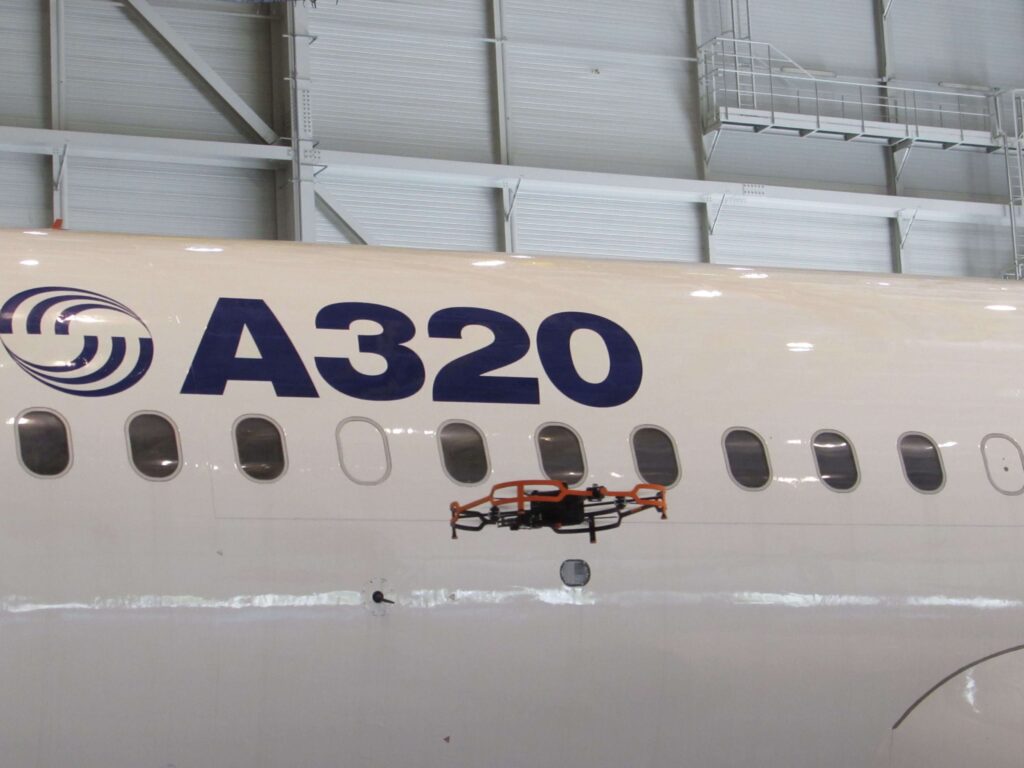Drone technology has revolutionized many industries. As remotely piloted drones continue to be utilized to inspect and maintain industrial plants and power lines, it would be a logical move by the aviation industry to adopt such equipment in MRO operations. While several companies have already presented their solutions, drone technology is not being rolled out as fast as one might have predicted.
An industry eager to innovate
Initially confined to military surveillance roles or leisure activities, drones are now being trusted with increasingly complex activities. For example, on June 7, 2021, Boeing achieved a world first when its MQ-25 Stingray unmanned aircraft system successfully refueled a US Navy F/A-18 Super Hornet when it was mid-air.
The reliability of drone technology has reached a point where it can perform such critical operations. So, could drones also perform tasks that require a high-level of safety, such as aircraft maintenance? According to manufacturers, the answer is a resounding yes.
In 2018, Airbus unveiled a drone-based maintenance solution called an Advanced Inspection Drone as part of its ambitious goal to accelerate MRO procedures. Traditionally, a visual inspection of an airplane takes a day to complete, Airbus’ drone captures images in 30 minutes and analyzes the collected data in just two-and-a-half hours. Equipped with a laser-based sensor, which is capable of detecting obstacles and halting the inspection when necessary, the drone operates autonomously and does not even require remote piloting.
During the same year, Indra Sistemas, a Spanish defense electronics group, launched an R&D project to conduct inspection missions using drone technology. At the time, the company said: “Using drones to inspect ships, planes – manned and unmanned – and infrastructure will reduce maintenance costs by 20% and improve operational availability by 30%.” Additionally, data collected during maintenance will be used to enrich a centralized system created to anticipate any possible incidents and faults.
By using UAS, the need for ground equipment is eliminated, which includes boom-lifts and ladders usually used by inspectors during manual inspections. Furthermore, with the integration of AI tools and machine learning, drone operations could improve the optimizing execution times and efficiency for MRO providers. Finally, damage detection technology has reached a point where a drone can outperform a manual check and potentially improve safety. So, it appears that drones are both a time and money-saving solution (and let’s face it, time is ultimately money).
While drone technology has remained in the testing stage, several real-life applications have already taken place.
In 2015, easyJet made headlines after completing an inspection of an Airbus A320 using a drone solution called Remote Intelligent Survey Equipment for Radiation (or RISEN), which was developed by Blue Bear and Createc. Using electro-optical, light detection and ranging sensors, the UAS inspected the aircraft for damage caused by lightning strikes.
Then three years later, American Airlines (A1G) (AAL) completed a test run of the Mavic 2 Enterprise, from Chinese drone manufacturer DJI, to elaborate an inspection routine in approximately half the time required by a regular inspection. Lorne Cass, American Airlines’ (A1G) (AAL) VP of Operations and Industry Affairs said: “This is a tool of the future that should be in every technician’s toolbox.”
Since then, this innovative technology has, rather surprisingly, not been adopted as quickly as one might have originally anticipated. Part of this delay may be attributed to the COVID-19 pandemic and its devastating impact on the aviation industry. But there are other obstacles to consider when it comes to new technology, most notably caused by regulations.
A transformative era
In the United States, the operation of drones under 24 kilograms (55 pounds) falls under the Federal Aviation Administration Part 107 regulations. Currently, these rules do not cover matters essential to the operation of drones for their employment in the MRO industry. For example, light UAS do not have a framework for type certification or airworthiness, which is a considerable obstacle in an environment where safety and traceability are vital. These regulations also restrict operations, preventing drones from flying beyond the line of sight (BLOS) and hampering their ability to work autonomously.
But the industry has entered a transformative period. Across the world, regulators are working to ensure that the future of drone operations is possible.
Since 2017, with the Integration Pilot Program (IPP), which is now called BEYOND, the FAA has been actively working to tackle the regulation challenges affecting UAS operations.
On the other side of the Atlantic Ocean, the situation is relatively similar. On December 31, 2020, the European Union Aviation Safety Agency (EASA) started to roll out new EU-wide regulations that create common legislation on drone operation, including for commercial purposes.
In April 2021, the UK Civil Aviation Authority authorized the first British company, Sees.ai, to trial a concept for routine BLOS operations without pre-approval. The permissions are part of a test project to prove the concept before potentially opening it up to the broader market.
Spearheading the concrete application of drones to the MRO industry, the Civil Aviation Authority of Singapore (CAAS) authorized a local company, ST Engineering, to carry out a general Visual Inspection (GVI) of A320 aircraft using their drone solution, DroScan, in June 2020.
Regulators have every interest in quickly breaking down the obstacles that are encumbering manufacturers. According to Levitate Capital, the global drone market could grow from $15 billion in 2020 up to $90 billion by 2030.

